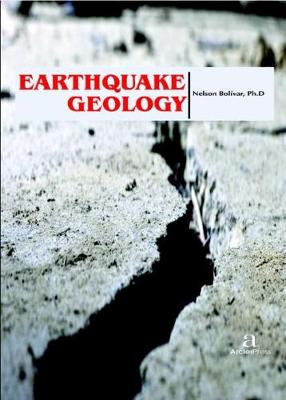An earthquake is always an unexpected phenomenon. Modern science is not able to predict the time or the place or the earthquake strength. The problem of locating the focus of a starting earthquake has not even been set due to the poor level of understanding the processes preceding its start. At present the main earthquake hypothesis is the "explosive" relaxation of the high elastic stresses accumulated in the lithosphere. Understanding a fault's slip behavior, as well as its length and connectivity, is important for constraining the magnitude range and frequency of earthquakes that a particular fault is likely to produce.
This book, Earthquake Geology, presents contributions from researchers of different countries in the world that point out the study of seismoinduced phenomena associated with recent and historical earthquakes. First chapter aims to estimate the response of freestanding full-scale equipment to 2% in 50 years hazard level motions, and the results are used to generate ready-to-use fragility curves and second chapter emphasizes on earthquake forecast with the seismic sequence hierarchization method. Third chapter encompasses the micro-earthquake monitoring with sparsely sampled data. In fourth chapter, we analyze in detail the features of the experimental weakening curves and provide a general fit which is purely empirical, with the synthesis of a large number of experiments and their result in terms of frictional breakdown energy Gf. Fifth chapter presents how to locate the focus of a starting earthquake and sixth chapter presents research on earthquake radon anomalies. Seventh chapter highlights on seismic sequence structure and earthquakes triggering patterns and eighth chapter emphasizes on predicting earthquakes with microsequences and reversed phase repetitive patterns. Application of commensurability in earthquake prediction is discussed in ninth chapter and tenth chapter gives out the co-planarity and symmetry theory of earthquake occurrence. Eleventh chapter presents a numerical investigation of earthquake shielding with seismic crystals and twelfth chapter presents an evaluation of strain accumulation in global subduction zones from seismicity data. Thirteenth chapter reveals on modification in atmospheric refractivity and GPS based TEC as earthquake precursors, and fourteenth chapter proposes a seismic-acoustic system for monitoring the earthquake origin process. The aim of fifteenth chapter is to calculate hydrodynamical phenomena: Earth's tidal and precursory variations in level of liquid in wells (boreholes) using identical systems of equations and to clarify data on distribution of hydrodynamical precursors on the Earth's surface. The objective of sixteenth chapter is to provide a wavelet transform method to detect P and S-phases in three component seismic data. In seventeenth chapter, basic models and standard mechanisms of earthquakes are briefly considered, results of processing of information on the earthquakes in the context of global spatial anisotropy caused by the existence of the vector Ag, are presented, and an analysis of them is given. Eighteenth chapter concentrates more on the actual relationship between earthquakes and solar activity and treats the effects causing the correlation only in the aspect of geomagnetic field strength variations. Nineteenth chapter presents a study on correlation of tidal forces with global great earthquakes, and an analysis and verification of forecasting the locations of future large earthquakes is given in last chapter. Forecasts of the locations of future major earthquakes play an important role in earthquake preparedness and determining earthquake insurance costs. Many such forecasts have been carried out with examples in this chapter.
- ISBN13 9781680944846
- Publish Date 30 November 2016
- Publish Status Active
- Publish Country CA
- Imprint Arcler Education Inc
- Format Hardcover
- Pages 218
- Language English
